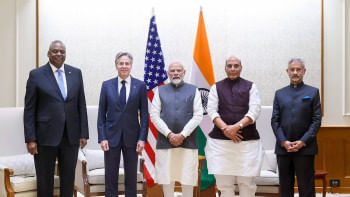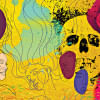For peace, freedom, and memorialisation

In one month, I attended two conferences in two extremes of the world, and it ended up equaling millions of experiences.
The first conference was in Bangkok from October 12-16. Sponsored by the International Coalition of Sites of Conscience, Asia Justice and Rights (AJAR), and others, this conference was mainly geared towards helping people come to terms with violence not with another spate of violent acts but with reconciliation. Promoting "healing" and ending "hate speech" were in every conversation. Transitional justice and reparation were concerns of all.
The second was a Women of the World (WOW) festival in the third week of November in Rio de Janeiro, Brazil. WOW celebrates achievements and challenges faced by women of all backgrounds, races, ethnicities, and religions. The festival is very inclusive, ensuring the representation of the LGBTQ+ community. We talked about our hurdles and wins in every panel, in every performance, in the marketplace, and in the Demonstration of the Arts in Rio.
Before I set foot at the peace-building conference in Bangkok, one of my senior colleagues had told me to find strength and beauty in talking to people coming from all parts of the world. He'd advised me "to relate past brutality and struggle with the reality of today to build a better future; whether it happened 50 or 70 years back," or two weeks back or four years ago—as is the case of Rohingya refugee communities in Bangladesh's Cox's Bazar.
Just as the Rohingya genocide goes largely unrecognised, the genocide of 1971, meted out to Hindus and Bangalis who were considered supporters of Sheikh Mujibur Rahman, is yet to be recognised even after more than 50 years. The killing of our intellectuals was indeed a strategy of the Pakistani military. The Liberation War Museum and other organisations, to date, are striving to have the Genocide of '71 be recognised as such by the world, in particular by the UN.
While seeking recognition of the genocide that happened here, we are faced with questions concerning the present. How are the Rohingya faring in Bangladesh? How are the Bihari doing? And what is the fate of the Indigenous population of our country?
While these questions were swirling in my mind, I was aghast to know from a Cambodian delegate that even a member of the Khmer Rouge, who was directly involved in the politics of hatred and killing way back in 1975 in Cambodia, is seeking justice for his fate! Human beings, even when perpetrators, feel that they have been victims of circumstances. The argument in their favour is drawn from the fact that their criminal acts of killing, looting, and rape were the strategies of the powers that be (or were). They believe they have been the pawns of the more powerful players in a war.
We, as human beings, usually see things in black and white. The notion of a Khmer Rouge perpetrator seeking justice is unthinkable. A Pakistani soldier falling in love with a Bangali girl amid war (such as in the film Meherjaan) is inconceivable. In this film, a Birangana (rape survivor of the liberation war) decides to flee to Pakistan pretending to be the wife of the Pashto soldier who had raped her several times—and this is seen as an act of compromise! How could this story feature in the recently produced play Ami Birangona Bolchhi and be portrayed as an exemplary story of heroism? I asked my conscience time and again.
Thinking of it now, Meher, the protagonist, is not fighting the Pashto man; she is fighting against the societies of both Pakistan and Bangladesh. Both countries are deeply entrenched in patriarchy. When the Pashto soldier is older, he abandons Meher in Karachi to settle with his wife and children in his village in North-East Frontier Province. In her struggles for economic independence, Meher gets support from another Bangali woman who lives in Karachi. By dint of hard work and perseverance, Meher becomes financially independent. She had gone to Bangladesh for a conference in the early '90s. On the face of it, everything seemed fine, but upon further probing, it all turned out to be a sham. Although she was given a platform to speak, the entrenched notions that her rape had tainted her body and her character still existed. It is because of this that she visited her brother and his family in the darkness of the night and left shrouded in the same darkness so that she could remain almost invisible. Meher was economically solvent thanks to her tailoring venture. But patriarchal societies such as ours did not seem to be able to excuse someone they considered a "fallen" woman.
I could almost hear Meher's voice being chorused at WOW Rio. The same toxic masculinity is what we, the feminists, are fighting against—the world over. We, the women of Bangladesh, India, Pakistan, and Nepal, came together and spoke in a common language of shared history of facing male patriarchy and British colonialism.
During one session, the topic of discussion was "What are Men talking about?" I felt drawn to attend the panel, which ended up being a very disturbing session where the Black men of the favela (areas where the downtrodden live) in Rio enacted abuse on women—with several narratives being told and retold. A single male voice placed the counter-narrative: an argument that a Black boy of the favela has faced bullying and threats his entire life, which puts him in a cycle of violence. He is a male facing male toxicity. When the victim pleads guilty and describes what led him to a life of criminality, it seems that intergenerational trauma is at the helm of the entire problem. The world keeps rolling out the cycle of violence—and so the cycle of violence continues throughout the ages in societies of an uneven world.
What, then, about women who are even more vulnerable victims of such toxicity, that is meted out to them in the name of patriotism and in the name of values upheld by various religions? Indeed, I am drawn to a quote by Johan Galtung from his 1969 Violence, Peace and Peace Studies, wherein he rightly remarked, "When one husband beats his wife, there is a clear case of personal violence, but when one million husbands keep one million wives in ignorance, there is structural violence." I would like to add that when a million men put shackles of religious doctrines to make women inactive, depriving them of fundamental human rights, it is structural violence.
Thus, structural and systemic violence is the root of women's suffering. And for every story to end in peace, it must be captured by memorialising these narratives.
I am reminded of the shawl my mother wove, in which she'd repeated a hundred thousand (or more) dua for the return of my lost brother after the victory of Bangladesh in December '71. My brother had set out to join Bangladesh's (then East Pakistan) war against Pakistan (then West Pakistan), never to return. On his way, my brother and Khosru, his friend, were stopped by the East Pakistan Rifles (EPR). They questioned the identity of my brother—who had fair skin, light-hued eyes, and a tall stature. The EPR sepoys claimed that my Chinku bhaiya was faking his identity. They insinuated that he was a West Pakistani. They roped him up, intending to kill him. Khosru bhai forbade them to take my brother, saying something to the effect of "If you think he is not a patriot, then you might as well take me along with him." Later, it transpired that the sepoys had intended to rob them of whatever valuables they had on them. In trying to do this, they captured and killed Chinku bhaiya and, along with him, Khosru bhai. It was an act of robbery of both belongings and of two valiant lives.
It is as if Khosru bhai was reborn as Faraz—in the same linear narrative, some 45 years post '71. In 2016, in the butchering and killing in Holey Artisan, Faraz stood by his friends and was butchered alongside them, willingly giving up his life. A sacrifice of life that gives hope to humanity.
In this all-pervading story of male toxicity, there are stories of heroism in Meher (the lone Birangana) fighting it out in Pakistan and Bangladesh, as well as in the stories of Khosru in '71 and Faraz in 2016.
In the heinous toxicity of hate in the name of religion, there are still the stories of uncompromised heroes. Let us continue the memorialisation of these heroes and she-roes. Let this memorialisation of their narratives speak about humanism, which resides at the centre. Let us bind our societies in peace and harmony into one beautiful universe.
Sara Zaker is a theatre and television actor, director, and social activist. She is also member secretary at the Liberation War Museum.
Views expressed in this article are the authors' own.
Follow The Daily Star Opinion on Facebook for the latest opinions, commentaries and analyses by experts and professionals. To contribute your article or letter to The Daily Star Opinion, see our guidelines for submission.

 For all latest news, follow The Daily Star's Google News channel.
For all latest news, follow The Daily Star's Google News channel. 











Comments